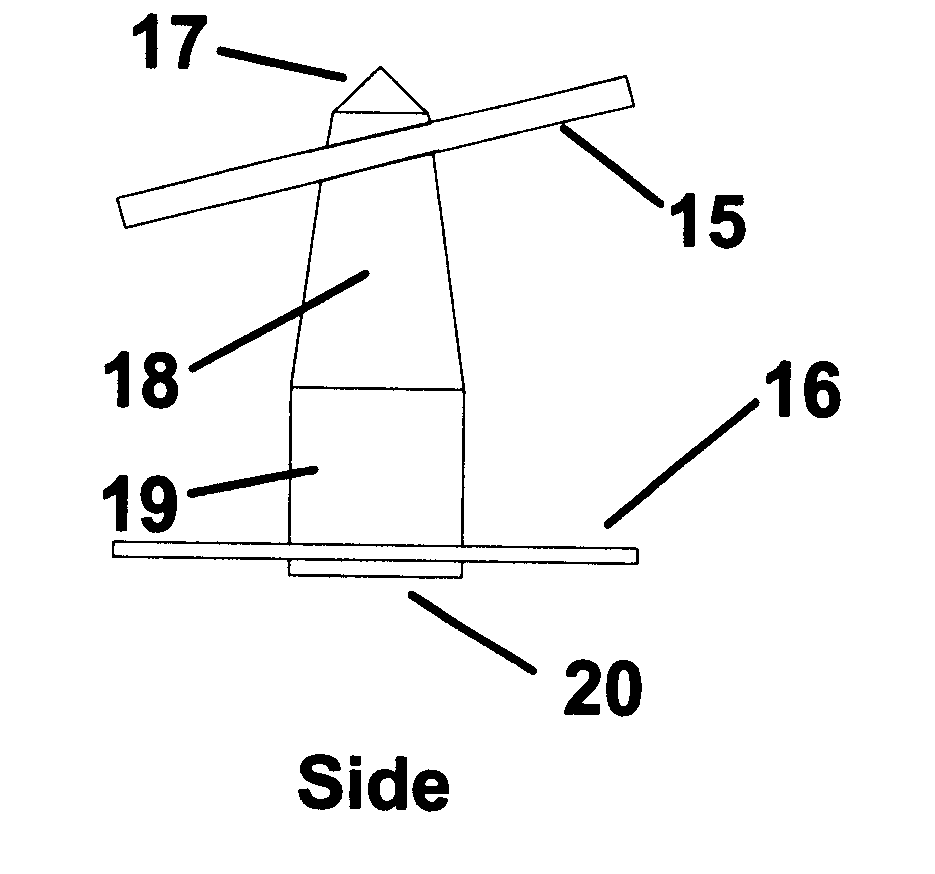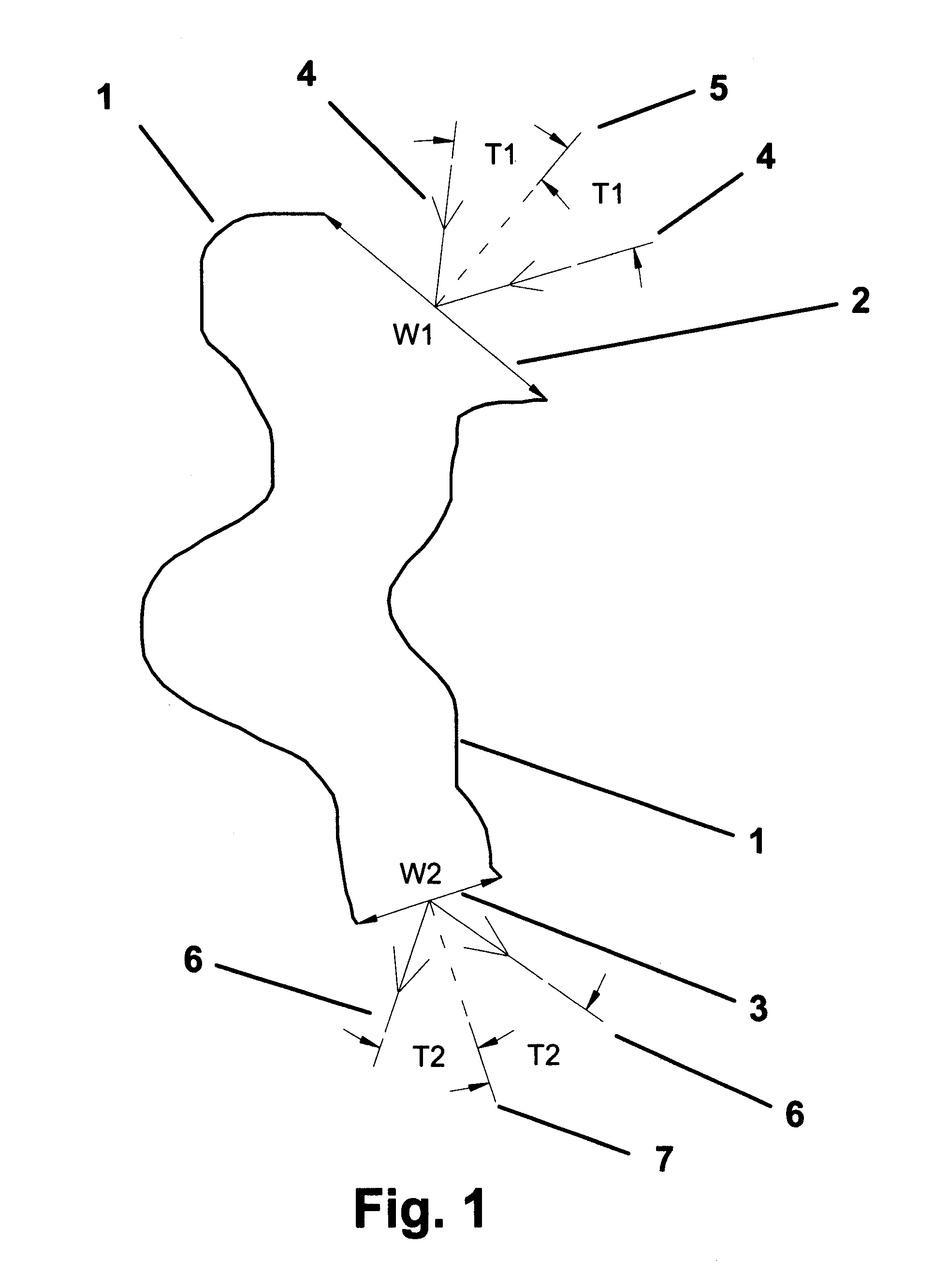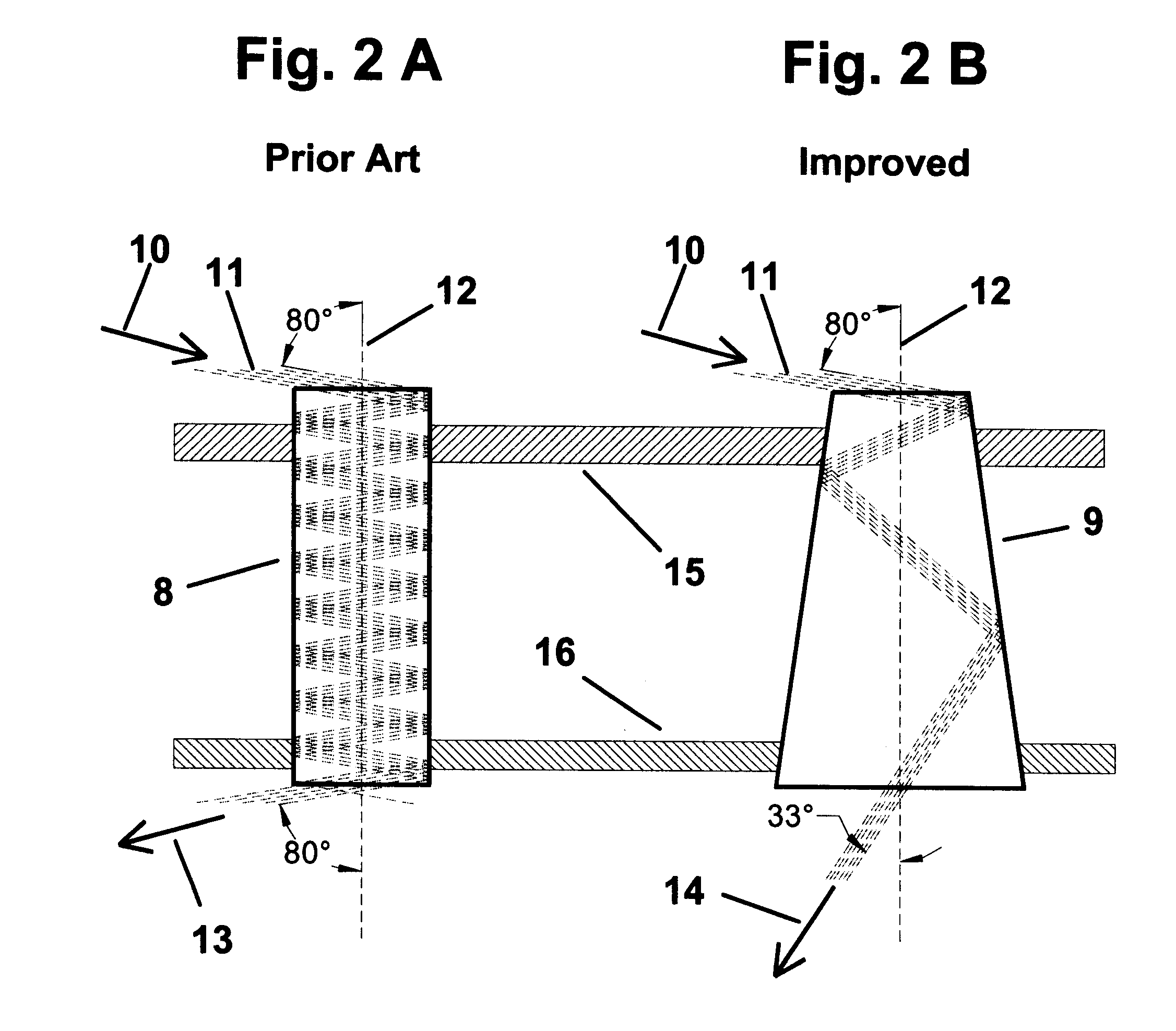Passive collimating tubular skylight
a tubular skylight and collimator technology, applied in skylights/domes, optical elements, instruments, etc., can solve the problems of not being able to achieve macduff's arrangement, not being able to achieve foster's refractive collimator, and not being able to achieve the effect of a tubular skylight or a tubular skyligh
- Summary
- Abstract
- Description
- Claims
- Application Information
AI Technical Summary
Benefits of technology
Problems solved by technology
Method used
Image
Examples
Embodiment Construction
prototype, similar in configuration to the embodiment shown in FIGS. 5A-5B, save the absence of extension 21, was tested. For the test prototype, the energy-collection aperture 22 was sized at 12 inches (30 cm) square, and was tilted to the south by 45 degrees, a reasonable angle for the location of the test in Keller, Tex., USA, where the local latitude is 33 degrees. The collimating tube 18 was 36 inches (91 cm) long, with a 12 inch long extension section 19. A translucent white diffuser, known as "White Cracked Ice," was used on the energy-delivering aperture 20, which was sized at 22 inches (56 cm) square. For comparison, a commercially available tubular skylight, of the type taught by DeBlock in U.S. Pat. No. 5,655,339, was purchased and installed next to the prototype. The commercial unit had a clear plastic dome, with prismatic back reflector, on top of a 10 inch (25 cm) diameter tube, whose inner surface used Alcoa EVERBRITE 95.RTM. reflector material. The only modification ...
PUM
 Login to View More
Login to View More Abstract
Description
Claims
Application Information
 Login to View More
Login to View More - R&D
- Intellectual Property
- Life Sciences
- Materials
- Tech Scout
- Unparalleled Data Quality
- Higher Quality Content
- 60% Fewer Hallucinations
Browse by: Latest US Patents, China's latest patents, Technical Efficacy Thesaurus, Application Domain, Technology Topic, Popular Technical Reports.
© 2025 PatSnap. All rights reserved.Legal|Privacy policy|Modern Slavery Act Transparency Statement|Sitemap|About US| Contact US: help@patsnap.com



